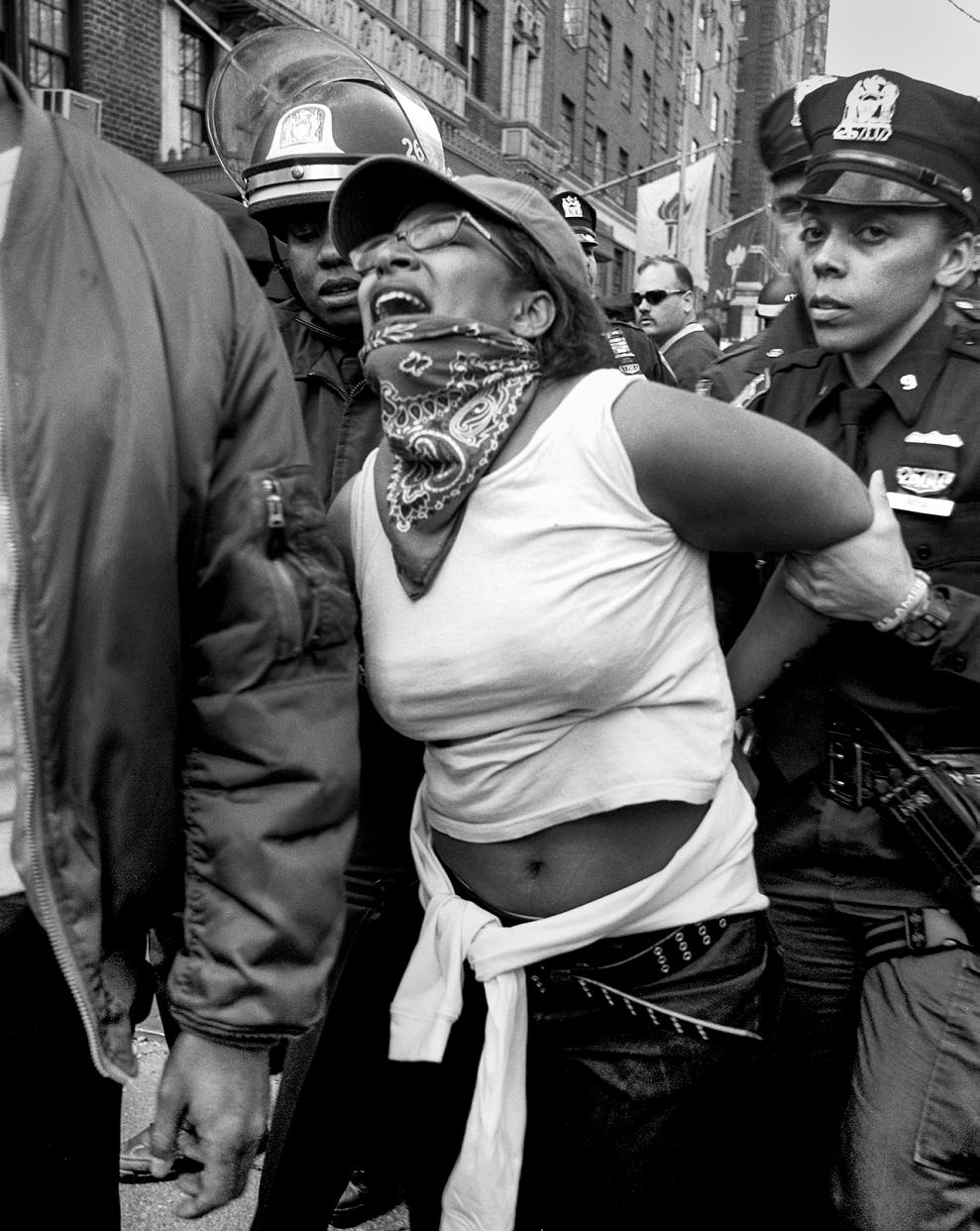
3 minute read
Taking it to the streets Kevin Bubriski
November 2001: Arlington, Vermont.

Advertisement
March 19, 2008: Anti-War Demonstration, Washington, DC
n Kevin Bub riski Taking it to the streets
Photographer captures a decade of protest in Main Street America
Our s ree s, Our Voices American Protests, wo11-2011 Kevin Bubriski powerHouse Books US $50 / Can $66

It’s strange the difference a week makes. When the e-mailman dumped a copy of Kevin Bubriski’s Our Streets, Our
Voices into my inbox, my first thought was that it was a betterthan-usual collection of photographs of street demonstrations – an eye-catching portrait of localised American history, but of no special significance.
A week later, the world entered Lockdown and we were all under house arrest. Suddenly, Our Streets moved into the category of nostalgia, a fierce reminder of a world that used to be, one in which we were allowed to stand up (even if we always seemed to end up on the losing side) for our rights to protest the harsh and unjust. Who would have thought that it would take so few days for society to shed all those rights we have taken for granted for generations?
The street has always been the ultimate public venue for political and cultural expression”, says the anonymous writer of a media release from powerHouse, the book’s “

Jan 20, 2001: Inauguration of George W. Bush, Washington, DC.


Jan 20, 2009: Inauguration of Barack Obama, Washington, DC
publisher; “and Bubriski’s images cover a decade of American protest that began on January 20, 2001 with the inauguration of George W. Bush and ended with Occupy Wall Street in October of 2011.
“The crowds in the street at the 2001 inauguration made it clear that America was at a difficult and defining moment after a contentious election. Following the inauguration of 2001 and the tragedy of 9/11, the American streets – as they have been since the country’s founding – became the setting for numerous memorials and vigils, parades and protests.
“Bubriski’s photographs chronicle events in New York, Washington, DC, and Vermont at large and small gatherings, most of which were unnoticed by the mainstream media. These portraits show a diversity of people: veterans, families of men and women on active duty, families of the victims of the 9/11 tragedy, parents of US servicemen and women killed in the Iraq War, security personnel, police, Muslim Americans, anti-war activists, disenfranchised minorities, and anarchist youth.”


I wonder what images we’ll see in future years’, after the United States and the world awakes from hibernation
October 10, 2011: Occupy Wall Street, New York City.

Looking at the pictures closely, I wonder what images we’ll see in future years, after the coronavirus threat is beaten and the United States and the rest of the world awakes from hibernation.
Will life return to pre-coronavirus normal, with dissent tolerated, if not actually encouraged, by the authorities? Or will we become imprisoned in a nightmarish lockdown, our liberties curtailed by desperate, but convenient, edicts passed when we were happy to be corralled, surveilled and incarcerated, “for our own safety.”
whatever the future may bring, however, I’m sure the Naked Cowboy (see next page), will continue to flail his guitar in New York’s Times Square. He’s featured in a shot from 2004 in Bubriski’s book; I spotted him in an almost deserted New York City in a panorama of deserted streets on TV a few nights ago; and I’m sure he’ll still be there defiantly awaiting at the end of the world. – Tony Sutton
September 24, 2005: Anti-War March, Washington, DC.


August 29, 2004: Republican National Convention, New York City 2004.









